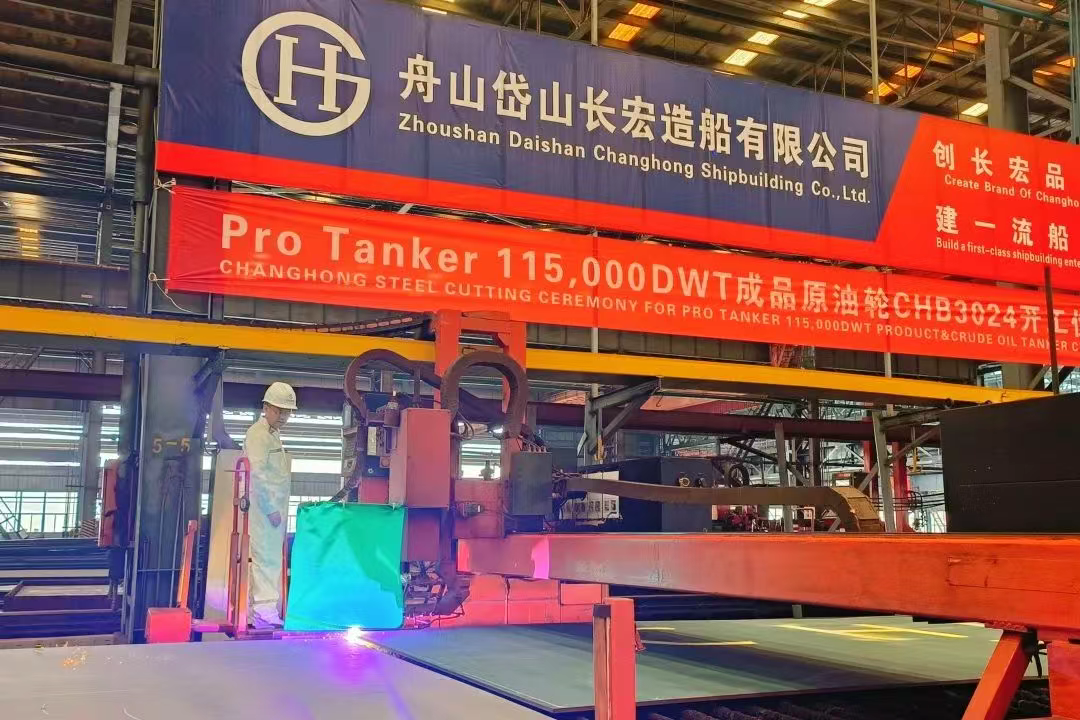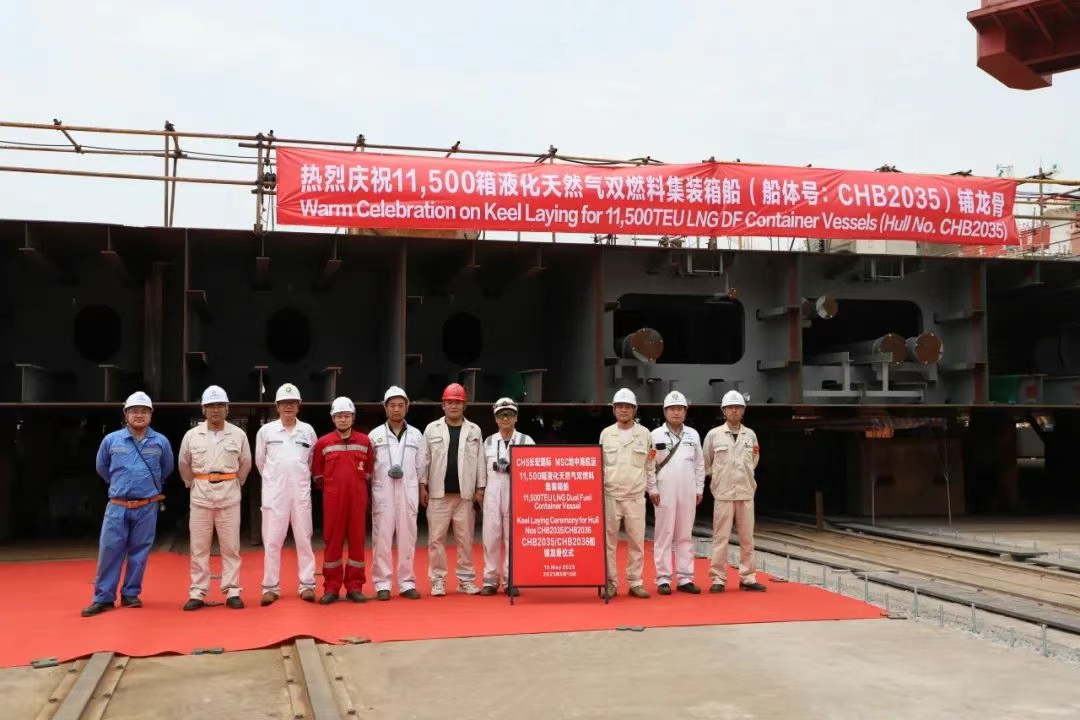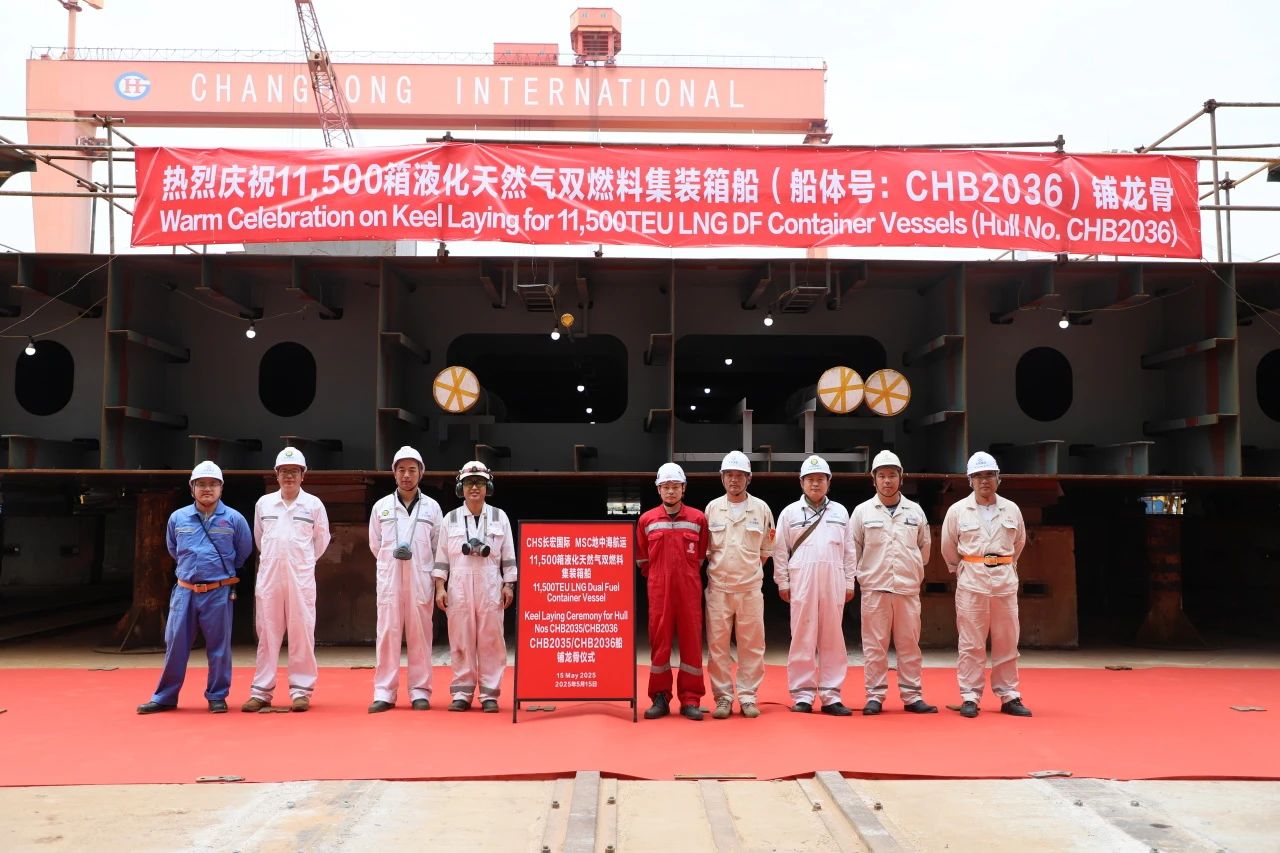On May 15, Zhoushan Changhong International Shipyard Co. LTD (Changhong International) broke ground for the fourth 115,000 DWT product crude oil tanker built for Pro Tanker Investment Co.

This 115,000 DWT tanker is the latest generation tanker on the market. It adopts the latest generation of 6G60ME main engine and is equipped with energy-saving devices such as propellers with larger diameters than similar vessels, vortex fins and energy-saving ducts, which significantly improves the propulsion efficiency. With an upright bow, the main engine normal continuous rating (NCR) is 10% lower than that of similar vessels under the same design speed, reducing the overall fuel consumption of operations and carbon emissions. It has an excellent carbon emission level and the energy efficiency index reaches the highest phase III requirements.
Meanwhile, the vessel’s capacity has been upgraded to about 132,000 cubic meters, with the ability to carry about 830,000 barrels of product oil or crude oil.
On the same day, Changhong International held the keel-laying ceremony for the 9th and 10th 11,500 TEU LNG dual-fuel container ships built for Mediterranean Shipping Company (MSC). So far, all the 10 vessels in the project have had their keels laid.


As previously reported, in January 2023, MSC placed an order with Changhong International for 10 LNG dual-fuel container ships, which are expected to be delivered in 2025 and 2026, respectively.
This series of container ships is a new generation of 10,000 TEU dual-fuel container ships jointly developed and designed by Changhong International and CIMC ORIC. The vessel is 335 meters long, 45.6 meters wide, 25 meters deep and has a designed speed of 20 knots. It has the characteristics of clean, environmentally friendly, and low carbon emissions. Compared with existing vessels of the same type, it can save about 5% of fuel, and the Energy Efficiency Design Index (EEDI) is about 40% lower than the stringent third-stage emission baseline of the International Maritime Organization (IMO).


